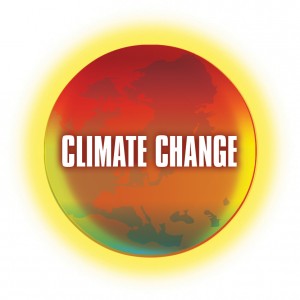STOCKHOLM — For the first time, the world’s top climate scientists on Friday formally embraced an upper limit on greenhouse gases while warning that it is likely to be exceeded within decades if emissions continue at a brisk pace, underscoring the profound challenge humanity faces in bringing global warming under control.
A panel of experts appointed by the United Nations, unveiling its latest assessment of climate research, reinforced its earlier conclusions that global warming is real, that it is caused primarily if not exclusively by human emissions, and that it is likely to get substantially worse unless efforts to limit those emissions are rapidly accelerated.
“Human influence has been detected in warming of the atmosphere and the ocean, in changes in the global water cycle, in reductions in snow and ice, in global mean sea level rise, and in changes in some climate extremes,” the report said. “It is extremely likely that human influence has been the dominant cause of the observed warming since the mid-20th century.”
Going well beyond its four previous analyses of the emissions problem, the Intergovernmental Panel on Climate Change endorsed a “carbon budget” for humanity — an upper limit on the amount of the primary greenhouse gas, carbon dioxide, that can be emitted from industrial activities and forest destruction.
To stand the best chance of keeping the planetary warming below an internationally agreed target of 3.6 grados Fahrenheit por encima de los niveles preindustriales y evitar así los efectos más peligrosos del cambio climático, el Grupo Especial constató, sólo alrededor 1 billón de toneladas de carbono se pueden grabar y el gas resultante arrojadas a la atmósfera.
Poco más de la mitad de esa cantidad ya se ha emitido desde el inicio de la Revolución Industrial, y al ritmo actual de consumo de energía, la tonelada billonésima se dará a conocer en todo 2040, según los cálculos de Myles R. Allen, un científico de la Universidad de Oxford y uno de los autores del nuevo informe. Más que 3 billón de toneladas de carbono todavía se dejan en el suelo, como los combustibles fósiles.
Limitar el calentamiento al objetivo acordado "es técnicamente factible, pero por el momento no vamos en la dirección correcta,"Dr.. Allen dijo en una entrevista. "No creo que lo hagamos a menos que muerdamos la bala y comencemos a hablar sobre lo que vamos a hacer con ese carbono extra que no podemos permitirnos arrojar a la atmósfera".
Seguir usando combustibles fósiles más allá de la billonésima de toneladas de emisiones., Las empresas tendrían que desarrollar una tecnología potencialmente cara para capturar el dióxido de carbono de fuentes de emisiones como las centrales eléctricas y almacenarlo bajo tierra.. Tales esfuerzos se han retrasado mucho; solo la semana pasada, Noruega redujo uno de los proyectos de este tipo más ambiciosos debido a los altos costos.
Pero una considerable cantidad de investigaciones sugiere que, en principio, podría hacerse, y en los estados unidos, the Obama administration is moving toward rules that would essentially require utilities to develop the technology if they want to keep burning coal to produce electricity. In response, the president’s Republican opponents have accused him of waging a “war on coal.”
The new report from the intergovernmental panel was released on Friday, after an all-night editing session that followed a week of discussion behind closed doors in Stockholm. The substantive points did not change greatly from a draft that was leaked in August, though the new version was extensively revised for clarity.
Desde 1990, the intergovernmental panel has been the primary scientific body advising the world’s governments about the risks of global warming. Every five or six years, hundreds of scientists on the committee assess thousands of published papers about climate change, giving their view of which are most likely to be accurate.
The group has now issued five major reports, each of them finding greater certainty that the world is warming and greater likelihood that human activity is the principal cause. The new report finds a 95 a 100 percent chance that most of the warming of recent decades is human-caused, up from the 90 a 100 percent chance cited in the last report, en 2007.
But the new document also acknowledges that climate science still contains huge uncertainties, including the likely magnitude of the warming for a given level of emissions, the rate at which the ocean will rise, and the likelihood that plants and animals will be driven to extinction.
The group won the Nobel Peace Prize in 2007, along with Al Gore, the former U.S. vice president, for highlighting the climate problem. But it came under attack in recent years by climate-skeptic organizations, who began to assail to the new report as alarmist even before it was published. The Heartland Institute, a Chicago organization that once compared climate scientists to the Unabomber, claimed in a report it released last week that any additional global warming would likely be limited to a few tenths of a degree and this “would not represent a climate crisis.”
Climate scientists not involved in writing the new report said that, in reality, the authors had made a series of conservative choices in their assessment of the scientific evidence. Regarding sea level, por ejemplo, dieron las primeras estimaciones firmes siempre que figuren en un informe del Grupo intergubernamental, declarando que si las emisiones continúan a un ritmo desbocado, la subida por el final del siglo 21 podría ser tanto como tres pies. Tiraron a cabo una serie de trabajos publicados que sugiere un aumento del peor caso más cerca de un metro y medio.
Del mismo modo, los autores salieron de su manera de incluir un lote de trabajos recientes que sugieren la tierra puede ser un poco menos sensible a las emisiones de dióxido de carbono que se pensaba, a pesar de que las preguntas se han planteado serias acerca de la validez de esas estimaciones.
El nuevo informe de baja el extremo inferior del rango de calentamiento potencial que se podría esperar que se produzca si el nivel de dióxido de carbono en la atmósfera se duplicara, overturning a decision the panel made in the last report and restoring a scientific consensus that had prevailed from 1979 a 2007. Six years ago, that range was reported as 3.6 a 8.1 grados Fahrenheit; the new range is 2.7 a 8.1 grados.
“The I.P.C.C. is far from alarmist — on the contrary, it is a highly conservative organization,” said Stefan Rahmstorf of the Potsdam Institute for Climate Impact Research in Germany, whose papers on sea level were among those that got discarded. “That is not a problem as long as the users of the I.P.C.C. reports are well aware of this. The conservatism is built into its consensus structure, which tends to produce a lowest common denominator on which a large number of scientists can agree.”
En Washington, the White House praised the new report. President Obama’s science adviser, John P. Holdren, said in a statement that it “conveys scientists’ strengthened confidence in projections that the kinds of harm already being experienced from climate change will continue to worsen unless and until comprehensive and vigorous action to reduce emissions is undertaken worldwide.”
The United States was for many decades the world’s largest emitter of greenhouse gases, though it was surpassed a few years ago by China. It refused to agree to a treaty called the Kyoto Protocol that sought to limit global emissions, greatly weakening that effort, and efforts to pass a comprehensive climate policy for the United States failed soon after Mr. Obama took office.
But he has recently embraced the issue anew, declarando su intención de utilizar el poder ejecutivo bajo la Ley de Aire Limpio para limitar las emisiones. Esas medidas en los Estados Unidos, así como el aumento de la ambición en muchos otros países, han dado lugar a ilusiones renovadas para un ambicioso acuerdo climático global en 2015.
Dirigiéndose a los delegados en Estocolmo por videoconferencia, el secretario general de las Naciones Unidas, Ban Ki-moon, dijo que iba a llamar a los jefes de Estado a una reunión de todo el mundo en septiembre próximo para tratar de crear un impulso para un acuerdo global.
"El calor está encendido,"Sr.. Ban declaró. "Ahora tenemos que actuar."
"Continuando con emisiones rápidas ahora está lanzando el clima lata en el camino, dejando el cambio climático para nuestros hijos y nietos,"Dijo Christopher B. Campo, an American scientist heading a subgroup of the intergovernmental panel that will issue a report next year on climate impacts. “But it is kicking a can that gets to be bigger, heavier and harder to move with each kick.”
Fuente: New York Times



Sin comentarios
Comentarios para Panel Climático dice Límite superior sobre las emisiones se está acercando están cerradas.